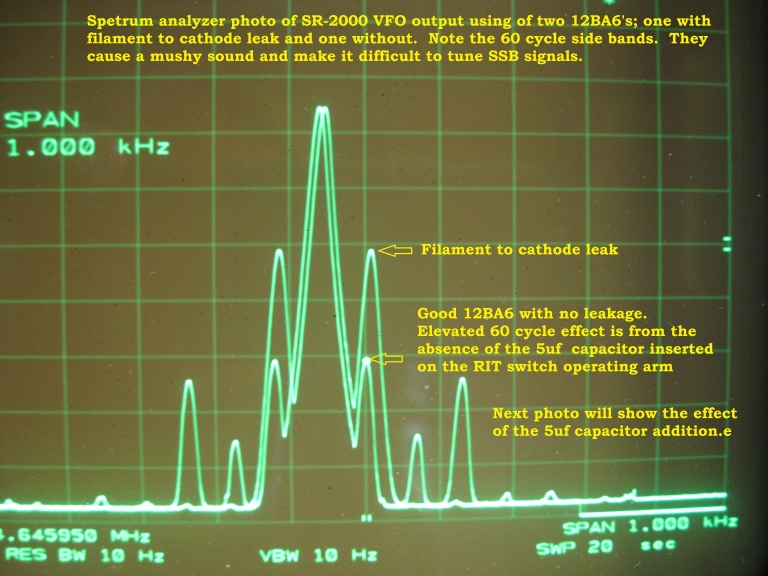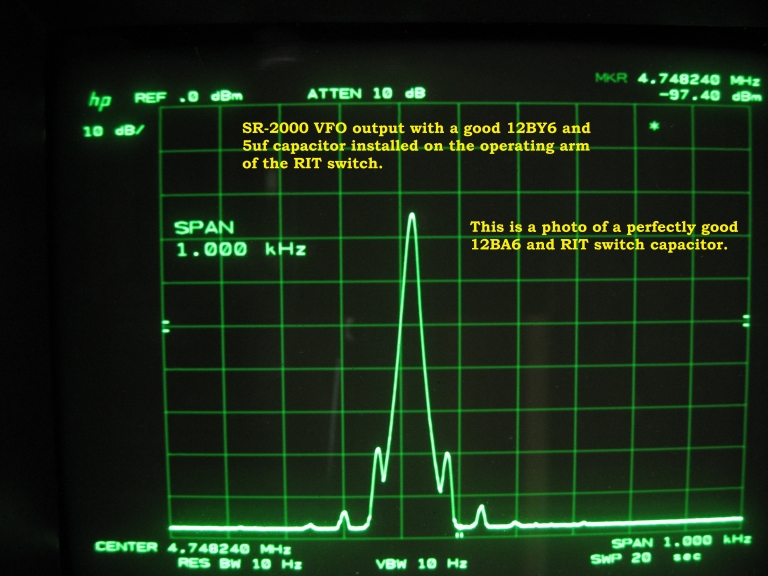VFO FMing
K9AXN Service note 0020a
This service note will correct one of the most common problems that occur in the SR-150, SR-400, SR400A, and SR-2000. By definition, it is the VFO being amplitude/frequency modulated by the superimposition of 60 cycles from two sources.
First, Clean the RIT switch. The RIT control line runs in the proximity of 115vac lines as it makes its way to the VFO. The control line passes through the RIT switch and when the contacts begin to loose conductivity from debris, the line becomes a very high impedance line vulnerable to the proximity of other signal lines i.e. 60 cycle AC.
Second, the 12BA6 seems especially susceptible to filament to cathode leakage. The first photo below points this out.
Third, Add a 5uf capacitor to ground on the operating leg of the RIT switch. This does two things. It stabilizes the line and helps keep the RIT switch clean. The second photo shows both problems have been corrected.
Fourth, the T/R relay should be cleaned for normal maintenance and especially after a long period in storage. The relay is housed in a protective plastic case but is none the less, is vulnerable. When cleaning the T/R relay verify that the contacts have the appropriate wiper action when transferred. The wiper action is necessary because the RIT contact carries virtually no current to keep it clean. This was pointed out by Bob Kembel.
The HP 8568B was used to shoot the photos. It was configured with resolution and video bandwidths of 10 cycles. If your spectrum analyzer is not capable of 10 cycle resolution and video bandwidths, you will not see the sidebands. It will look as if there is no problem.

